Living on the edge: A case study of Bangalore’s migrant waste pickers
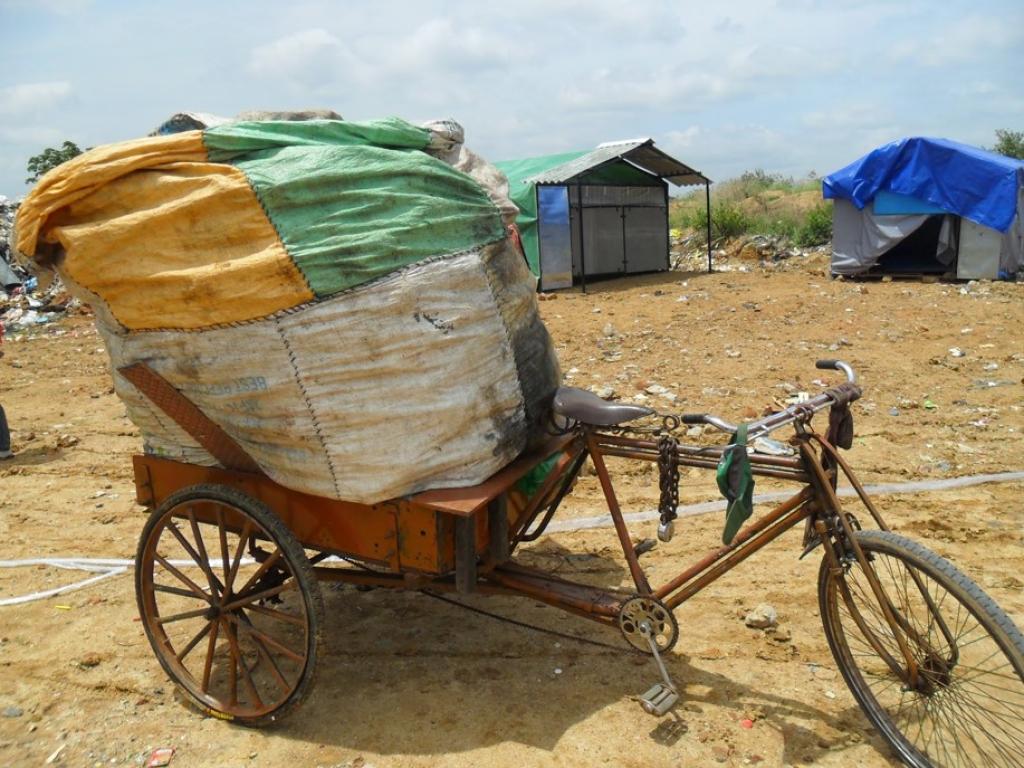
Authors: Tanvi Deshpande and Kavya Michael
Photo credits: Shamala Kittane, Nilakshi Chatterji, Saideepa Kumar, Kavya Michael and Tanvi Deshpande
Acknowledgment: Shamala Kittane, Karthik Bhaskara, Nikhil Shenai

Climatic and non-climatic factors intersect and create an entire tribe of marginalised and vulnerable people. Incidentally they form a large proportion of the informal economy of Bangalore city. This photo essay looks at the living and working conditions of one of the most marginalised groups in Bangalore, the waste pickers. The focus is on those who live in undeclared, blue tent, temporary squatter settlements. Our field research revealed that most of the inhabitants in these settlements are migrants from West Bengal, a distinct region in the East of India.
The road to waste picking
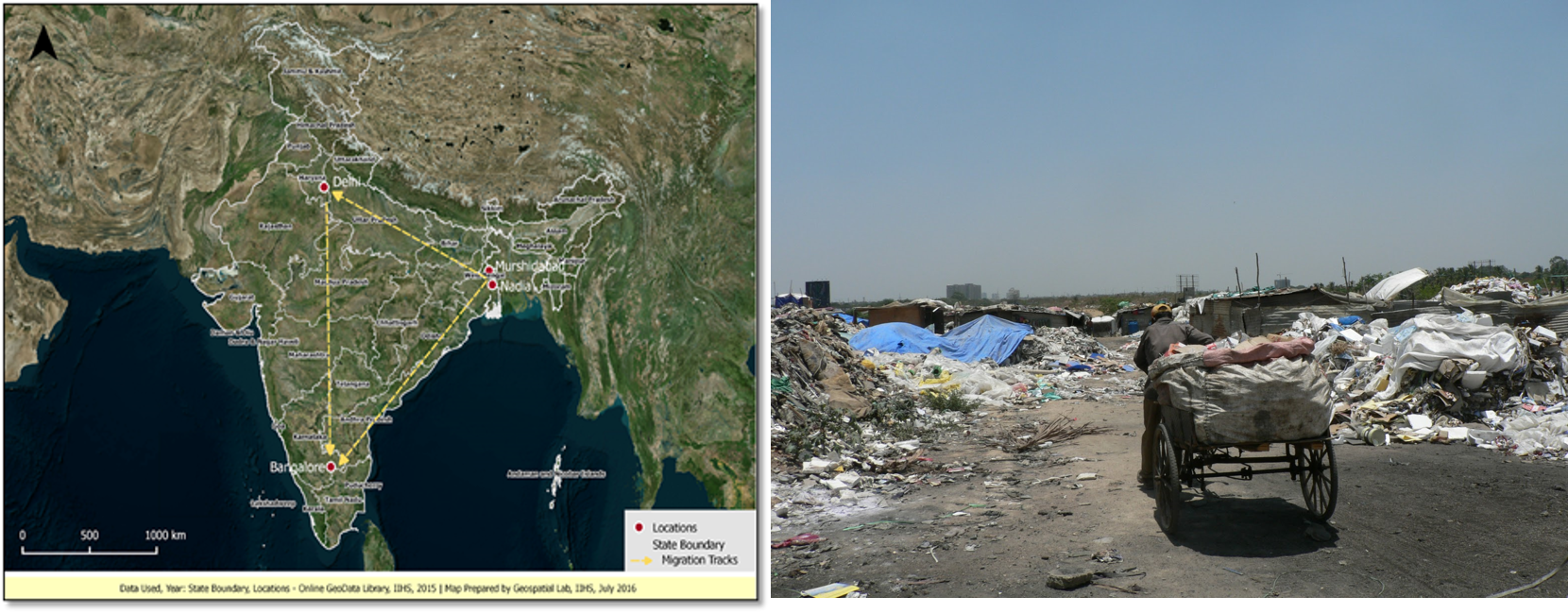
Migration patterns |
For the residents of the informal settlements that we visited, migration from West Bengal has been an outcome of both push and pull factors.
The major push factors have been climatic events like floods and cyclonic storms, particularly the cyclone Sidr in 2007. The migrants are typically landless agricultural labourers who have suffered from agrarian distress and social and economic marginalisation. Relatively abundant livelihood opportunities in big cities like Delhi and Bangalore act as major pull factors for these migrants; particularly in the context of poor life experience in their native location.
The broom that sweeps it under the carpet
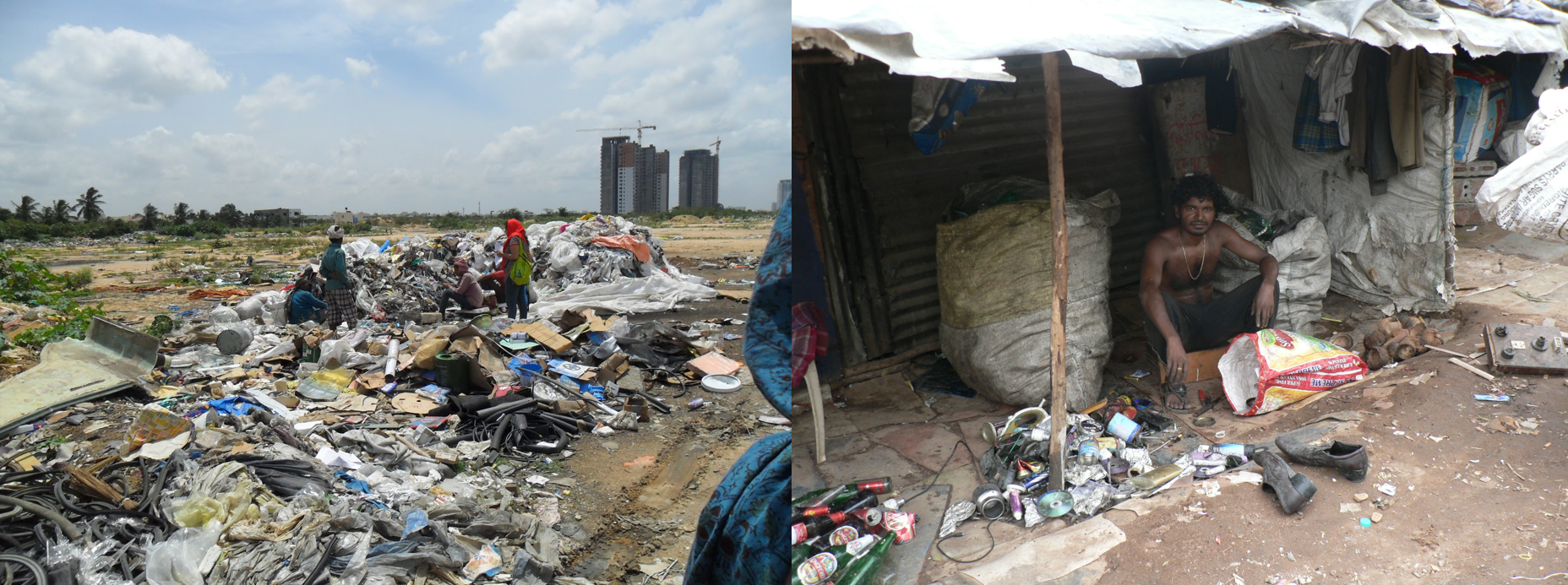
A waste picker's workspace |
Bangalore, as a growing economy, offers livelihood opportunities to many. The poor and marginalized resort to work in the informal economy since the formal economy has several entry barriers. The informal sector, especially in construction and waste picking, proves to be a feasible opportunity for the poor and marginalised, since there are fewer entry barriers like education attainment or skill development and no need for any formal training.
Paths treaded…
|

A waste picker's livelihood routes Mobility map |
The map above illustrates routes covered by a waste picker on his bicycle over a span of three days. Waste pickers provide an essential service by driving the city’s recycling efforts, keeping the streets clean especially in areas not covered by the local government. They are vital for the effective functioning of an urban system. Climate change impacts their livelihoods mainly during the rainy seasons and summers. During the rainy seasons their waste gets soiled as they have no storage facility thereby affecting their income. This is also a dangerous and discriminatory livelihood where as waste pickers they are typically invisible in the eyes of the city.
The grass is not exactly green on this side

Living conditions |
Bangalore has witnessed highly exclusionary urbanization patterns - the rising price of land and rentals have made housing a major issue, resulting in a significant proportion of Bangalore’s population living in informal settlements (notified and non-notified) scattered throughout the city. The city is thus unable to absorb the surge of migrants. Unfortunately the poor have to live in temporary settlements with no form of tenureship and rights over the land. These settlements are cut off from basic services and infrastructure, such as networked water supplies, central electricity grids and with no sanitation and waste disposal facilities. Their dismal living conditions and livelihood results in malrecognition and further marginalization by the city.
White picket fences are but a pipe-dream for them
|
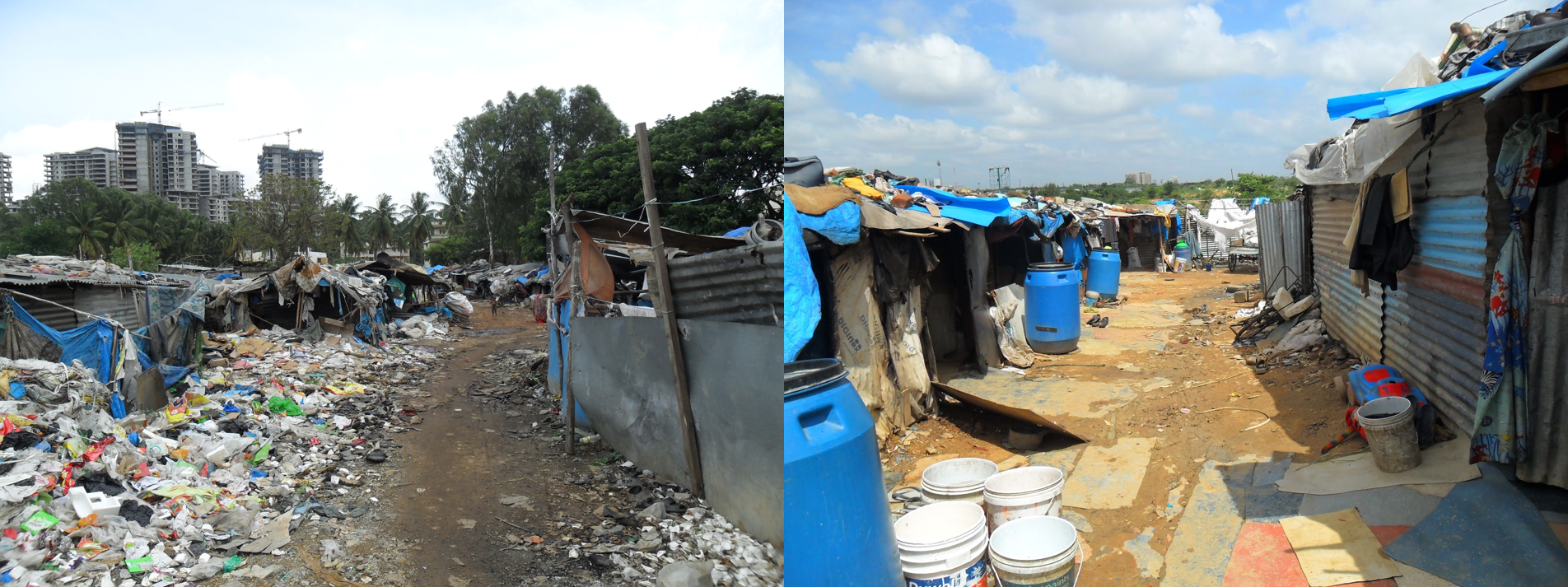
Temporary and rudimentary material used as building blocks |
Migrants construct their own houses using materials such as asbestos sheets, wooden boards and tarpaulin sheets. The fear of eviction has also led to very little upgrading of the housing structures. Moreover, these settlements are often situated in hazardous areas, such as landfill sites and areas near open drains. During the rainy seasons the mosquito population increases resulting in increasing number of disease outbreaks.
The unrealities they face

|
|
|
Community bathroom |
Open and clogged drain |
Often tarpaulin sheets are used to construct an enclosure that serves as community bathrooms. In the absence of any sanitation facilities they resort to open defecation.
Water is supposed to be a life-giving substance. But…

|
|
|
Polluted well |
Water supply provided by private tankers |
In the absence of a piped water supply and polluted groundwater the settlement dwellers have to depend predominantly on private water tankers. This mode of water supply impacts their savings as it is usually expensive.
Bringing some sunshine in their lives
|

Resorting to alternate energy sources |
Since the settlement is non-notified and does not get electricity, a few of the settlement dwellers, using their social networks, have installed solar panels that power a bulb.
The invisible, marginalized masses

|
As waste pickers they are exposed to hazardous and toxic material. They suffer from headaches, dehydration and fatigue as they travel in the scorching heat to collect waste.
The burdens they carry

|
These waste pickers are among the most vulnerable groups in the informal settlement as they are at the bottom of the hierarchy of the informal economy, represented by the quiet violence of neglect, disdain, ill health and uncertainty.
The unknown variable in the equation
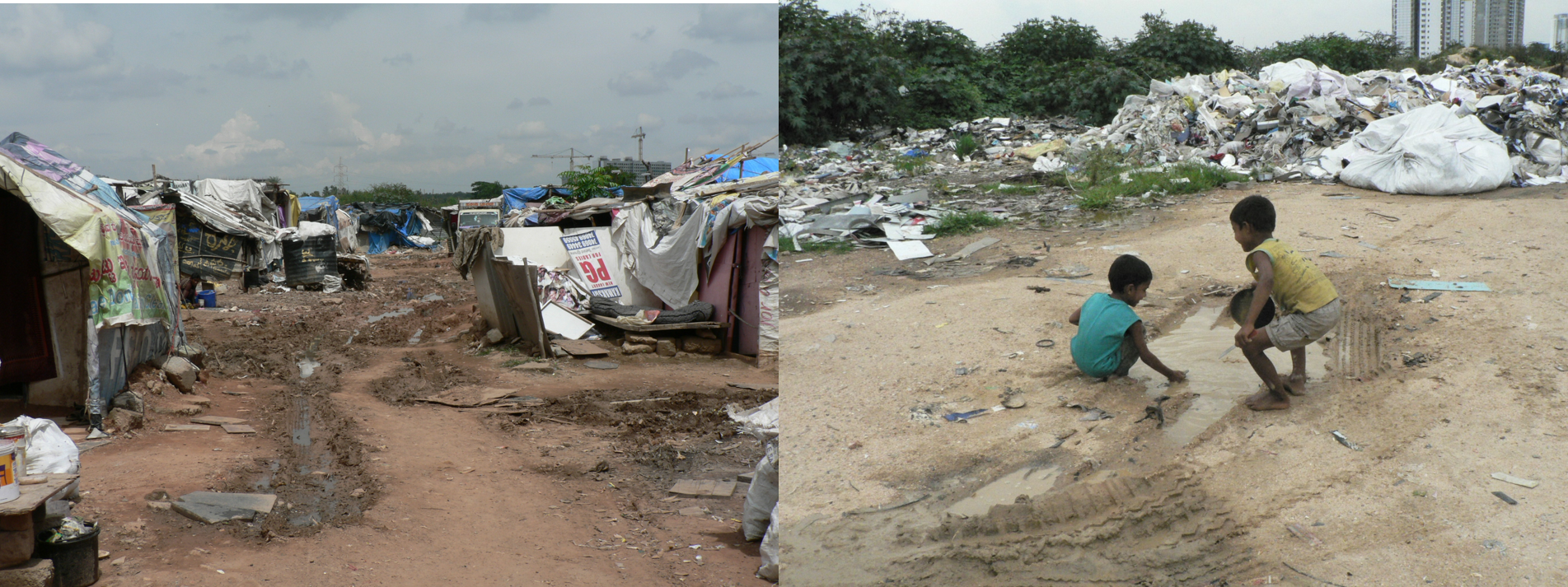
|
Climate change has very subtle impacts and it is difficult to distinguish between risks that are an outcome of improper urbanization and risks arising from climate induced events. Climate change acts as a crisis catalyst and shapes and reshapes existing vulnerabilities.
The effects of climate change fluctuates among different social groups and often falls disproportionately on the poor and socially and economically marginalised, such as waste pickers as highlighted in this photo-essay.
A choice between two injuries
|
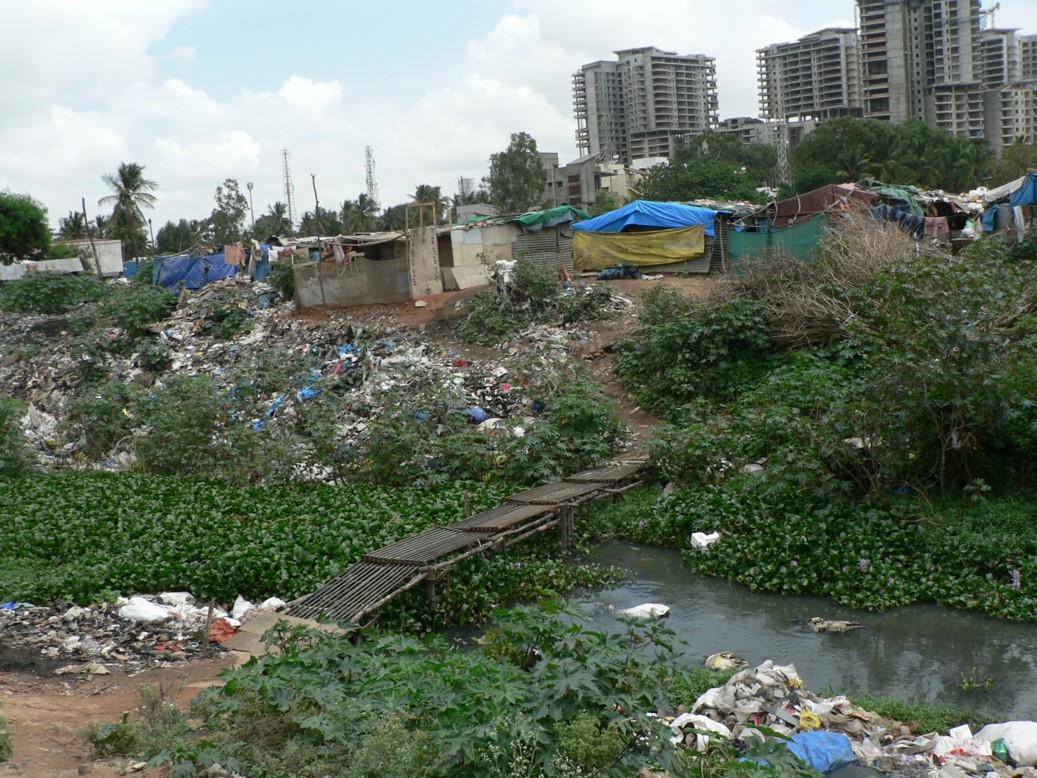
Destitution in their homeland |